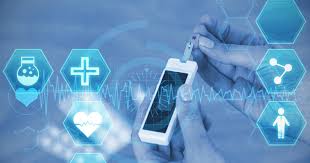Modern Tools Transforming Diabetes Care
Devices & Technology
Diabetes management has evolved significantly with the advent of advanced devices and technologies. From continuous glucose monitors (CGMs) to insulin pumps and smart insulin pens, these innovations are making it easier for individuals to track blood sugar levels, administer insulin, and maintain better control over their condition. Embracing these technologies can greatly improve the quality of life for people with diabetes.

Diabetes Devices and Technology: Revolutionizing Management
Continuous Glucose Monitors (CGMs): Real-Time Glucose Tracking
Continuous Glucose Monitors (CGMs) have become a game-changer in diabetes management by providing real-time data on blood sugar levels throughout the day and night. Unlike traditional glucose meters, which require frequent finger-stick tests, CGMs use a small sensor placed under the skin to monitor glucose levels continuously. This technology allows users to see how their blood sugar responds to food, exercise, and medication, enabling more precise and timely adjustments. The information can be accessed on a smartphone or receiver, with alarms to alert users of high or low glucose levels, making it easier to avoid dangerous fluctuations.
CGMs are particularly beneficial for those who have difficulty recognizing hypoglycemia or who need tight glucose control. By identifying patterns and trends, CGMs help users make informed decisions about their diet and insulin doses, reducing the likelihood of complications. The data can also be shared with healthcare providers, facilitating more personalized and effective treatment plans. With ongoing improvements in accuracy and user-friendliness, CGMs continue to be an essential tool for managing both type 1 and type 2 diabetes.
Insulin Pumps: Automated Insulin Delivery
Insulin pumps provide a more flexible and consistent method of insulin delivery compared to traditional injections. These small, wearable devices deliver a continuous supply of insulin through a catheter placed under the skin, mimicking the body’s natural release. Pumps allow users to program different rates of insulin delivery throughout the day, offering the ability to adjust doses for meals, exercise, or illness. Many pumps now integrate with CGMs, creating a semi-automated insulin delivery system that adjusts insulin based on real-time glucose readings.
The latest advancements in insulin pumps include predictive algorithms that adjust insulin delivery proactively to prevent blood sugar highs and lows. This approach, often referred to as a “closed-loop system” or “artificial pancreas,” reduces the daily burden of diabetes management by automating many of the decision-making processes. Insulin pumps are especially valuable for individuals with type 1 diabetes who need frequent insulin adjustments. As technology continues to improve, these devices are becoming smarter, more discreet, and easier to use, enhancing the overall quality of life for users.
Smart Insulin Pens: Simplifying Insulin Therapy
Smart insulin pens are the next generation of insulin delivery devices, designed to make injections easier, more accurate, and less error-prone. These pens track insulin doses, provide reminders for missed injections, and offer dosing suggestions based on current blood sugar levels. Smart pens connect to mobile apps, allowing users to log their doses automatically and monitor their insulin use over time. This connectivity is particularly useful for individuals who struggle with manual record-keeping or those managing complex insulin regimens.
The data from smart insulin pens can be shared with healthcare providers, who can use the information to make more precise treatment recommendations. For those transitioning from traditional pens or syringes, smart pens offer a significant improvement in diabetes management, helping to reduce the mental load of calculating doses and remembering injections. As these devices evolve, they are expected to offer even more features, such as integration with other diabetes management tools and enhanced predictive capabilities.
Emerging Technologies: The Future of Diabetes Care
The field of diabetes technology is rapidly evolving, with new devices and innovations on the horizon. Artificial pancreas systems, which combine CGMs and insulin pumps with advanced algorithms, are moving closer to providing fully automated glucose control with minimal user input. Other promising technologies include implantable sensors that can monitor glucose levels for months at a time and advanced drug delivery systems that release insulin in response to blood sugar changes.
Wearable devices and digital health platforms are also playing an increasingly important role in diabetes care, offering real-time coaching, dietary advice, and virtual consultations. These technologies provide a more holistic approach to diabetes management, integrating lifestyle factors with medical care to improve outcomes. As research and development continue, the future of diabetes management looks brighter, with technology offering more personalized, convenient, and effective solutions for those living with the condition.